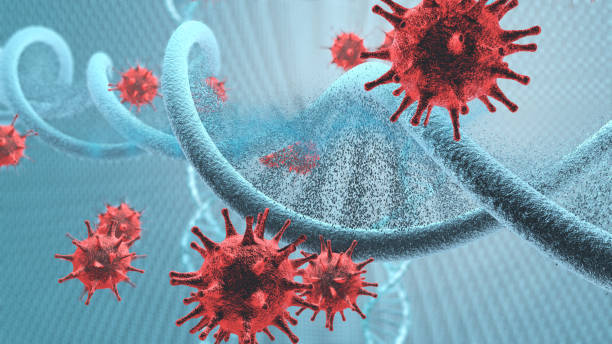Understanding HIV/AIDS: A Comprehensive Overview
Understanding HIV/AIDS: A Comprehensive Overview

Human Immunodeficiency Virus (HIV) and Acquired Immune Deficiency Syndrome (AIDS) represent one of the most significant health challenges of the modern era. Since its identification in the early 1980s, HIV/AIDS has claimed millions of lives globally and has necessitated a multifaceted approach to prevention, treatment, and care. This article aims to provide a comprehensive understanding of HIV/AIDS, including its history, transmission, diagnosis, treatment, and ongoing efforts to combat this global epidemic.
What is HIV/AIDS?
HIV/AIDS is a condition where the Human Immunodeficiency Virus (HIV) attacks the body’s immune system, specifically the CD4 cells, which are crucial in fighting infections. When the immune system is weakened to a certain extent, HIV progresses to Acquired Immune Deficiency Syndrome (AIDS), the most severe phase of the infection, where the body becomes vulnerable to a range of opportunistic infections and diseases. HIV is transmitted through direct contact with certain body fluids from an infected person, such as blood, semen, vaginal and rectal fluids, and breast milk. While there is no cure for HIV, antiretroviral therapy (ART) can control the virus, helping people with HIV live longer, healthier lives and reducing the risk of transmission to others. Despite advances in hiv symptoms, treatment, and awareness, HIV/AIDS continues to be a major global public health issue, necessitating ongoing efforts in prevention, treatment, and education.

History of HIV/AIDS
The history of HIV/AIDS is both complex and poignant, marked by scientific achievements, societal challenges, and profound human experiences. The timeline of the epidemic is outlined below, highlighting key events and milestones.
Early 1980s:
The first official reporting of what would become known as AIDS occurred in the United States in 1981 when the Centers for Disease Control and Prevention (CDC) noted an unusual cluster of pneumonia and Kaposi’s sarcoma cases in young gay men. These were illnesses not typically seen in individuals with intact immune systems.
1982:
The term “AIDS” (Acquired Immune Deficiency Syndrome) was introduced to describe the emerging epidemic. Initially, the syndrome was linked to gay men, leading to widespread stigma and discrimination. However, it soon became clear that the disease affected a broader demographic, including hemophiliacs, intravenous drug users, and heterosexual men and women.
1983:
Researchers at the Pasteur Institute in France, led by Luc Montagnier, isolated a retrovirus later known as HIV (Human Immunodeficiency Virus) that was believed to cause AIDS. Around the same time, a team led by Robert Gallo in the United States identified a similar virus, which led to a contentious period where both teams claimed discovery.
1985:
The first commercial blood test for HIV was licensed, significantly improving the ability to detect the virus and prevent blood-borne transmission.
1987:
The U.S. FDA approved the first antiretroviral drug, zidovudine (AZT), initially used to extend the lives of patients with AIDS.
1990s:
The decade marked significant advancements in HIV treatment, most notably the introduction of Highly Active Antiretroviral Therapy (HAART) in 1996. HAART, a combination of several antiretroviral medications, turned HIV from a fatal diagnosis into a manageable chronic condition for many patients.
2000s:
Global initiatives, such as the President’s Emergency Plan for AIDS Relief (PEPFAR) and the Global Fund to Fight AIDS, Tuberculosis, and Malaria, were established, significantly expanding access to antiretroviral therapy in low- and middle-income countries.
2010s and Beyond:
The focus expanded to include not just treatment but also prevention strategies like Pre-Exposure Prophylaxis (PrEP). Despite progress, challenges remain, including disparities in access to care, the need for ongoing prevention efforts, and the search for a vaccine and cure.
Throughout its history, the HIV/AIDS epidemic has been shaped by factors beyond biology, including social, political, and economic dynamics. It has sparked activism, influenced public health policies, and catalyzed significant research in virology and immunology. While the trajectory of the epidemic has shifted over the years, HIV/AIDS continues to be a critical global health issue, reflecting our shared humanity and interconnectedness.
Transmission of HIV
The transmission of HIV occurs when body fluids containing the virus from an infected person enter the body of an uninfected person. Understanding the specific ways in which HIV can be transmitted is crucial for prevention and education efforts. Here are the primary modes of HIV transmission:
Sexual Contact:
This is the most common route of transmission. HIV can be spread through unprotected vaginal, anal, or oral sex with an infected person. The virus is present in the semen, vaginal and rectal fluids, and can enter the body through mucous membranes or tiny cuts or sores in the genital, rectal, or oral areas.
Blood Transmission:
HIV can be transmitted through contact with infected blood. This can happen through sharing needles, syringes, or other injection equipment among people who inject drugs. Healthcare workers are also at risk of accidental needle stick injuries. However, rigorous screening processes for blood donations have made transmission through blood transfusions extremely rare in countries with effective blood safety practices.
Mother-to-Child Transmission:
An HIV-positive mother can transmit the virus to her child during pregnancy, childbirth, or breastfeeding. Without intervention, the transmission rate from mother to child can be 15-45%. However, antiretroviral treatments significantly reduce this risk.

Other Modes:
While much less common, HIV can also be transmitted through organ transplants, tissue transplants, and artificial insemination if the donated materials are infected. Additionally, occupational exposure, like needlestick injuries in healthcare settings, can also be a risk, though protocols for post-exposure prophylaxis (PEP) are highly effective in reducing this risk.
It’s important to note how HIV is not transmitted. It cannot be spread through casual contact such as hugging, shaking hands, or sharing dishes or toilet seats. Insects like mosquitoes do not transmit HIV, nor does it spread through air, water, or saliva during casual kissing.
Understanding these transmission routes underscores the importance of preventive measures, such as using condoms, testing regularly for HIV, utilizing pre-exposure prophylaxis (PrEP) for high-risk individuals, and ensuring that people living with HIV are on effective antiretroviral therapy, which can reduce their viral load to undetectable levels, at which point the virus cannot be transmitted sexually (known as “undetectable = untransmittable” or U=U).
The Origins of HIV
The origins of HIV trace back to non-human primates in Central and West Africa. The consensus among scientists is that the virus jumped species to humans (a process known as zoonotic transfer) when humans hunted and consumed primate meat, coming into contact with the infected blood. Here’s a closer look at how this transference likely occurred:
-
HIV-1:
The most prevalent and virulent strain of HIV, known as HIV-1, is believed to have originated from chimpanzees in Central Africa. The Simian immunodeficiency virus (SIV) infects chimpanzees and is very similar to HIV-1. The crossover to humans is thought to have occurred when hunters came into contact with the blood of infected chimpanzees, likely through hunting or butchering. Molecular clock dating suggests that HIV-1 group M, the group responsible for the majority of global HIV infections, transferred to humans in the early 20th century.
-
HIV-2:
Less aggressive and less widespread than HIV-1, HIV-2 mainly exists in West Africa and is linked to the sooty mangabey monkey. Like with HIV-1, the transfer to humans likely occurred through hunting and consumption practices, with SIV from sooty mangabeys mutating into HIV-2 upon transmission to humans.
The spread of HIV from rural areas to urban centers, and subsequently globally, was facilitated by a range of factors, including urbanization, increased travel, and changes in sexual behavior. Understanding the zoonotic origins of HIV is crucial not only for historical context but also for informing future strategies to prevent similar cross-species transmissions.
It’s important to recognize that while we can trace the origins of HIV to these zoonotic events, the global spread of the virus has been overwhelmingly driven by human behaviors and systems, highlighting the need for continued focus on prevention, education, and treatment strategies.
Symptoms
HIV symptoms can vary significantly from person to person and depend on the stage of the infection. Here’s a general overview of the symptoms across different stages of HIV:
-
Acute HIV Infection (Primary HIV Infection):
-
- This stage occurs 2-4 weeks after infection and is often referred to as acute retroviral syndrome (ARS) or primary HIV infection.
- Symptoms can resemble those of a severe flu or mononucleosis and may include fever, swollen lymph nodes, sore throat, rash, muscle and joint aches, headache, and diarrhea.
- Not everyone will experience these symptoms, but when they occur, they can last from a few days to several weeks before resolving. Many might not recognize these symptoms as signs of HIV and might not seek testing or treatment.
-
Clinical Latency Stage (Chronic HIV):
-
- After the acute stage, HIV enters a latency phase, where the virus is still active but reproduces at very low levels. People may not have symptoms or only mild ones during this stage.
- This phase can last a decade or longer, although, without treatment, some people may progress through this phase faster.
- The virus is still transmissible during this stage, even in the absence of symptoms.
-
AIDS (Acquired Immunodeficiency Syndrome):
-
- AIDS is the most severe phase of HIV infection, defined by a CD4 cell count of less than 200 cells/mm³ or the occurrence of specific diseases associated with HIV infection.
- Symptoms can include rapid weight loss, recurring fever or profuse night sweats, extreme and unexplained tiredness, prolonged swelling of the lymph glands, prolonged diarrhea, sores of the mouth, and anus.
Red, brown, pink, or purplish discolorations on or beneath the skin or within the oral cavity, nasal passages, or eyelids, as well as memory impairment, depressive symptoms, and other neurological conditions.
It’s crucial to note that the only way to know for sure whether you have HIV is to get tested. Determining your status is the initial stage in gaining command over your well-being. In the early stages of infection, it’s common for HIV to be mistaken for other illnesses, so testing is key, especially if you’ve had potential exposure to the virus through unprotected sex, needle sharing, or other risk factors.

Diagnosis
Diagnosing HIV involves a series of tests that detect the presence of the virus, its components, or the antibodies and antigens the body produces in response to the infection. Early diagnosis and initiation of treatment can significantly improve health outcomes and reduce the risk of transmitting the virus to others. Here’s how HIV is diagnosed:
- Antibody/Antigen Tests: The most common initial test for HIV is the fourth-generation antigen/antibody test. This test can detect both HIV antibodies and the p24 antigen, which appears soon after infection and before antibodies develop. These tests can typically detect HIV within 2 to 6 weeks after exposure.
- Antibody-Only Tests: These tests only check for HIV antibodies and are generally used for rapid and at-home tests. Antibody-only tests can take longer to detect HIV, usually detecting antibodies 3 to 12 weeks after exposure.
- Nucleic Acid Test (NAT): This test looks for the actual virus in the blood (its RNA). It’s very expensive and not routinely used for screening except in specific situations, such as when a recent infection is suspected or if the person has had potential exposure and early symptoms of HIV infection. Nucleic acid testing (NAT) can typically detect HIV within 10 to 33 days following exposure.
The Testing Process:
- Screening: The first step is usually a screening test, which is often done with a blood sample from a vein or a finger prick. If the test uses blood from a finger prick and is positive, a follow-up blood test from a vein is necessary to confirm the results.
- Confirmation: If the initial screening test is positive, a follow-up test will be conducted to confirm the diagnosis. This could be a different type of antibody test, a NAT, or a test that differentiates between HIV-1 and HIV-2.
- Linkage to Care: After a positive diagnosis, the next step is to link the individual to HIV care for further evaluation and to start antiretroviral therapy (ART). Early initiation of ART helps to manage the virus, maintain a good quality of life, and prevent transmission to others.
It’s crucial for anyone who is sexually active or at risk of HIV through other means to get tested regularly. The U.S. The CDC advises routine HIV testing for individuals aged 13 to 64 as part of standard healthcare. For those with specific risk factors, more frequent testing is advised.
Treatment
The treatment for HIV involves antiretroviral therapy (ART), a regimen of daily medications that helps control the virus, maintain the immune system’s health, prevent the progression to AIDS, and reduce the risk of HIV transmission to others. Here’s an overview of the key aspects of HIV treatment:
Antiretroviral Therapy (ART):
ART is not a cure for HIV, but it can control the virus and enable people to live longer healthier lives.
The regimen typically includes a combination of medications from different drug classes to reduce the likelihood of the virus becoming resistant to treatment.
Common classes of antiretroviral drugs include reverse transcriptase inhibitors, protease inhibitors, integrase strand transfer inhibitors, and entry inhibitors, among others.
Initiating Treatment:
Current guidelines recommend starting ART as soon as possible after diagnosis, regardless of CD4 cell count (a measure of immune system health).
Early initiation of ART is associated with better health outcomes and reduced risk of transmitting the virus to others.
Monitoring and Managing:
Regular monitoring is crucial to assess the effectiveness of the therapy, monitor for side effects, and make any necessary adjustments to the treatment regimen.
The primary goals are to reduce the viral load (the amount of HIV in the blood) to an undetectable level and maintain or improve CD4 cell counts.
Undetectable = Untransmittable (U=U):
Achieving and maintaining an undetectable viral load means the virus is not detectable by standard blood tests. People with an undetectable viral load cannot sexually transmit HIV to others, a concept known as “Undetectable = Untransmittable” or U=U.
Lifestyle and Support:
Along with ART, maintaining a healthy lifestyle, including proper nutrition, regular exercise, and avoiding substances that can weaken the immune system, is important.
Mental health support and counseling can also play a critical role in managing HIV, addressing the psychological impacts, and supporting adherence to treatment.
Prevention of Opportunistic Infections:
People with HIV are at higher risk for certain opportunistic infections. Preventive medications and vaccinations are recommended to protect against these infections.
Adherence to Treatment:
Consistent adherence to ART is critical for its effectiveness. Missing doses can lead to drug resistance, treatment failure, and increased risk of transmission.
Innovations and Future Directions:
Research continues to explore new treatment options, including long-acting injectables, which may offer an alternative to daily pills, and strategies aiming for a functional cure or complete eradication of the virus.
Effective HIV treatment is a cornerstone of managing the disease, improving the quality of life for those living with HIV, and preventing its spread. Regular medical care, adherence to prescribed medications, and supportive services are key components of successful HIV treatment and management.

Prevention
Preventing HIV transmission is crucial to combating the global HIV/AIDS epidemic. Effective prevention strategies are diverse, encompassing behavioral, medical, and educational approaches. Here’s an overview of the key prevention methods:
Safe Sex Practices:
Using condoms correctly and consistently during sexual intercourse is one of the most effective ways to prevent HIV transmission. It’s also important to reduce the number of sexual partners and choose safer sexual activities.
Testing and Counseling:
Regular HIV testing is crucial for everyone who is sexually active or at risk of HIV through other means. Knowing one’s HIV status and that of their partner can significantly inform safer sex practices and other preventive measures.
Pre-Exposure Prophylaxis (PrEP):
PrEP is a preventive method where people who do not have HIV. But who are at high risk take HIV medicine daily to reduce their chance of getting infected. When used according to the prescribed regimen, PrEP demonstrates high effectiveness in preventing HIV.
Post-Exposure Prophylaxis (PEP):
PEP involves taking antiretroviral medicines within 72 hours. After a possible exposure to HIV to prevent the virus from establishing infection. PEP needs to be taken for 28 days and is recommended for emergency situations. Like after unprotected sex, needlestick injuries, or sexual assault.
Needle Exchange Programs:
For individuals who use injection drugs, participating in needle exchange programs can significantly reduce the risk of HIV transmission. These programs provide clean needles and syringes and offer a way to dispose of them safely after use.
Mother-to-Child Transmission Prevention:
Pregnant women with HIV can take ART during pregnancy, and delivery. And breastfeeding to significantly reduce the risk of transmitting HIV to their babies.
Blood Screening:
Ensuring that all blood products are screened for HIV. And other pathogens can prevent transmission through blood transfusions and organ transplants.
Education and Awareness:
Educating people about how HIV is transmitted and how to prevent it is fundamental. This includes dispelling myths, promoting safe sex education, and encouraging open discussions about HIV prevention.
Harm Reduction Strategies:
For those who use drugs, harm reduction strategies, including supervised consumption services and access to substance use treatment, can reduce the risk of HIV transmission.
Universal Precautions in Healthcare Settings:
Healthcare providers should always use universal precautions. Such as wearing gloves and using sterile equipment, to prevent HIV transmission in medical environments.
Vaccination and Microbicides:
While there is currently no vaccine for HIV, research is ongoing. Additionally, researchers are exploring the use of vaginal and rectal microbicides to provide a barrier against HIV during sexual intercourse.
Implementing a combination of these prevention strategies can significantly reduce the risk of HIV transmission. Public health initiatives and individual actions must work hand in hand to advance HIV prevention efforts globally.
The Global Response and Ongoing Challenges
The global response to HIV/AIDS has evolved significantly since the virus first emerged, with international collaboration. And substantial investments aimed at mitigating the epidemic’s impact. However, despite progress, numerous challenges remain. Here’s an overview of the global response and the ongoing hurdles in the fight against HIV/AIDS:
The Global Response:
- International Initiatives: Organizations such as the World Health Organization (WHO), and the Joint United Nations Programme on HIV/AIDS (UNAIDS). The Global Fund to Fight AIDS, Tuberculosis, and Malaria has been instrumental in mobilizing resources. And coordinating international efforts to tackle HIV/AIDS.
- PEPFAR: The President’s Emergency Plan for AIDS Relief (PEPFAR), launched by the U.S. in 2003. Represents one of the largest investments by any nation to combat a single disease. PEPFAR has significantly contributed to HIV/AIDS treatment, prevention, and research worldwide.
- Access to Treatment: Global initiatives have vastly increased access to antiretroviral therapy (ART) in low- and middle-income countries. Transforming HIV from a fatal diagnosis to a manageable chronic condition for millions worldwide.
- Prevention Programs: Efforts to distribute condoms, promote safe sex, and provide needle exchange programs. Offering voluntary male circumcision in high-prevalence areas has been crucial in HIV prevention.
- Mother-to-Child Transmission: Programs aimed at preventing mother-to-child transmission have successfully reduced the incidence of pediatric HIV, saving countless lives.
Ongoing Challenges:
- Stigma and Discrimination: The stigma surrounding HIV/AIDS continues to hinder testing and treatment. And prevention efforts, contributing to the marginalization of affected individuals and communities.
- Funding: While significant, funding for HIV/AIDS is still insufficient to meet global targets. Financial commitments must be sustained and increased to continue the progress made over the past decades.
- Access to Healthcare: Disparities in access to healthcare services, particularly in rural or impoverished regions. Impede efforts to provide testing, treatment, and education.
- Emerging Populations: Young people, particularly in sub-Saharan Africa. Are at an increased risk of HIV infection, necessitating focused prevention and treatment strategies.
- Co-infections: HIV’s interaction with other diseases, like tuberculosis (TB) and hepatitis. Complicated treatment and care, particularly in regions where these diseases are prevalent.
- Treatment Resistance: The emergence of HIV drug resistance poses a threat to the effectiveness of current treatments. Underlining the need for ongoing research and the development of new therapeutic options.
- Prevention Gaps: Despite available tools like PrEP, significant gaps remain in prevention. Particularly among high-risk populations and in regions with limited healthcare infrastructure.
- Cure and Vaccine Research: While ART is effective, it is not a cure. Research towards finding a functional cure or vaccine continues to be a critical, yet challenging, aspect of the global response.
The global fight against HIV/AIDS illustrates the power of international solidarity and innovation in addressing health crises. However, the journey is far from over. Continued commitment, adaptive strategies, and inclusive policies. It is essential to overcome the remaining challenges and move closer to ending the AIDS epidemic.
Conclusion
HIV/AIDS remains a critical issue that requires a comprehensive approach encompassing medical treatment, prevention, and socio-economic interventions. While significant progress has been made, the fight against this virus is far from over. Continued research, education, and global cooperation are essential in overcoming the challenges. Posed by HIV/AIDS and moving closer to a world free of this disease.





